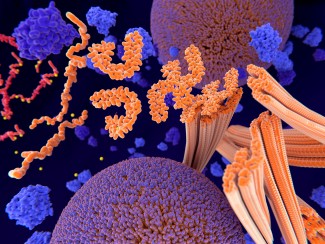Progressive supranuclear palsy (PSP) is difficult to diagnose and is often diagnosed late in the disease process, on average three years after the first symptoms appear. The only reliable diagnostic marker to date is biological analysis of brain tissue, which is difficult to obtain while the patient is still alive. There is no 100% reliable biological marker.
Symptoms of PSP
However, the clinical signs (symptoms) presented by the patient, combined with neuropsychological tests, MRI brain imaging, and an oculomotor examination, can strongly orient the clinician toward a diagnosis of PSP.
In the early years of the disease, symptoms can be similar to those of Parkinson’s disease, but more suggestive signs make diagnosis of PSP highly likely. Specific criteria include oculomotor problems and backward falls due to postural instability (retropulsions).
Oculomotor symptoms are very often characterized by difficulty moving the eyes up or down, or difficulties following a moving object with the eyes. The upper eyelids may rise and retract, resulting in a distinctive facial expression of surprise or wide-eyed astonishment. Muscle contractures are also observed, especially in the neck, with patients experiencing a backward head posture (retrocollis) and difficulty bending the neck.
The absence or non-permanence of resting tremors also helps differentiate PSP from Parkinson’s disease.
To date, five different forms of progressive supranuclear palsy have been identified, differing in the clinical signs presented by patients but caused by identical brain lesions. These forms are:
- classic PSP
- PSP-Parkinsonism (no falls or eye movement problems)
- PSP-PAGF (pure akinesia with gait freezing) (predominantly movement difficulties and freezing)
- PSP-CBS (corticobasal syndrome) (speech impairment, loss of balance, repeated falls)
- PSP-PNFA (progressive non-fluent aphasia) (severe early and progressive language problems)
In addition to clinical symptoms, a probable diagnosis of PSP is based on four types of tests:
- Neuropsychological tests that reveal deficits in reasoning, judgment, attention, memory, and interpretation of information received
- Morphological brain imaging that makes it possible to visualize neuronal loss (atrophy) in certain areas of the brain
- Functional brain imaging that provides an assessment of the loss of function due to lesions, particularly in the frontal region or basal ganglia.
- A recording of eye movements that quantifies the loss of vertical mobility of the eyes.

